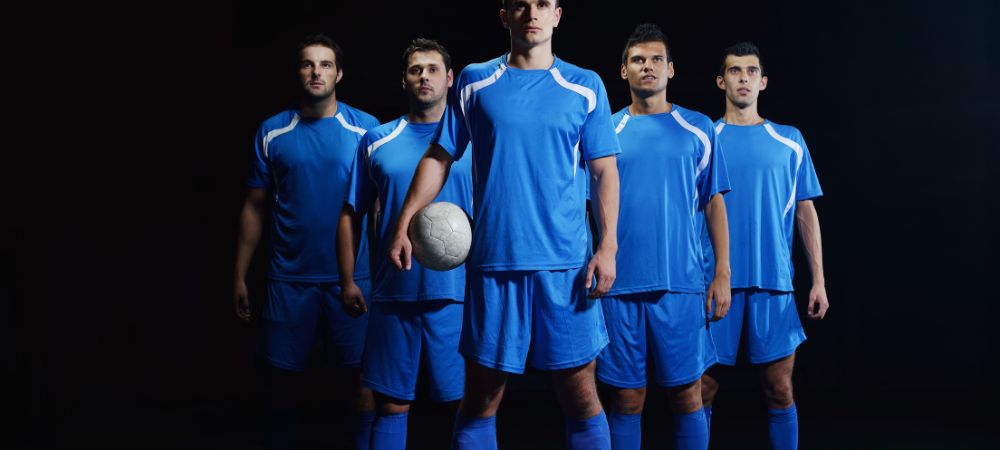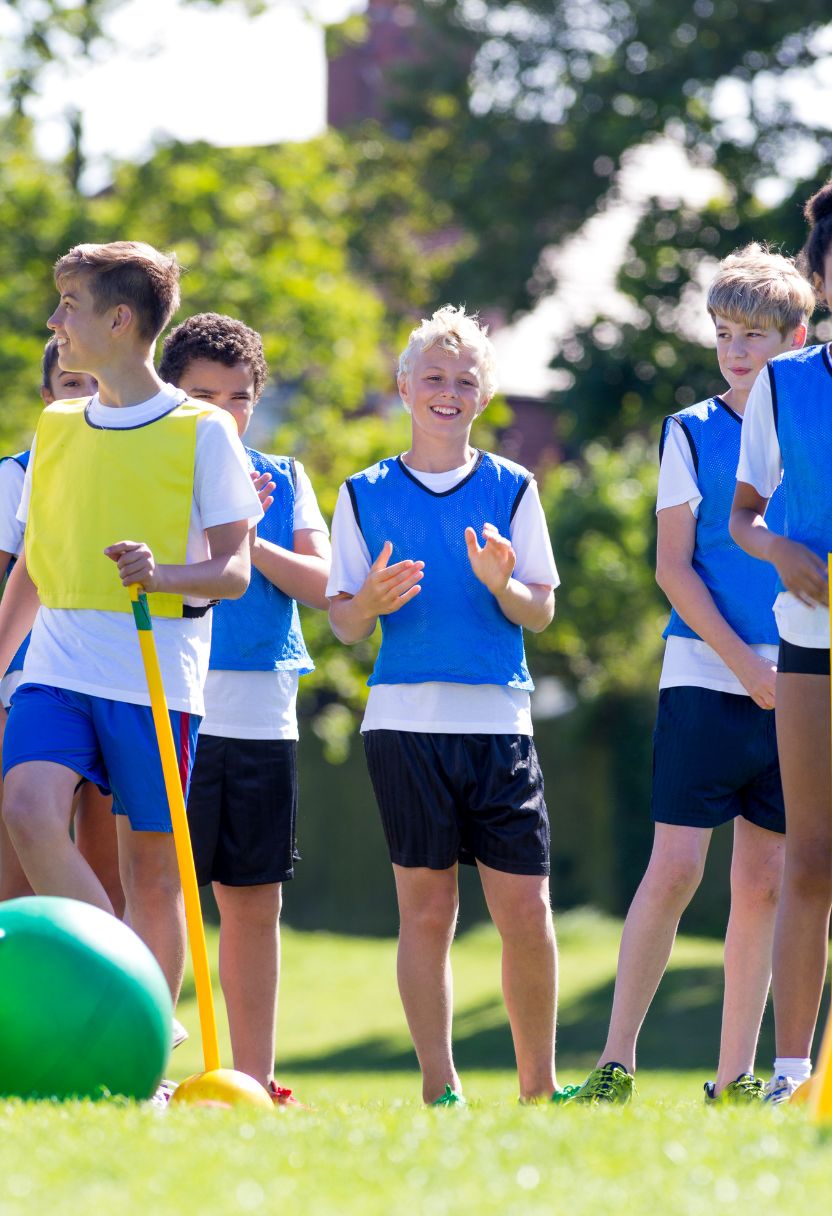

The historical evolution of soccer is actually quite fascinating. It's not like it just popped outta nowhere as the world's most popular sport. Oh no, it's been a long journey that spans centuries and continents. So, let's dive into it!
Soccer's roots can be traced back to ancient civilizations, believe it or not. The Chinese had this game called "Cuju" which was played during the Han Dynasty around 206 BC - 220 AD. It wasn't exactly like modern soccer but involved kicking a ball through an opening into a net. Pretty cool, huh? Receive the inside story click that. But don't think for a second that they were the only ones; Greeks and Romans had their own versions too.
Fast forward a bit to medieval Europe and you'll find people playing something called "mob football." This was more chaotic than what we know today – participants would kick, throw and basically do whatever to get a ball to the opponent's goal area. And guess what? There weren't any strict rules or even proper fields! Sometimes entire villages would join in these matches.
However, what really got things rolling (pun intended) was when England started formalizing rules in the mid-19th century. view . The Football Association (FA) was established in 1863 which separated rugby football from association football – what we now call soccer. This effort led to standardization of rules such as banning the use of hands and setting up specific field dimensions.
From there, soccer began spreading its wings globally thanks to British sailors, traders, and soldiers who carried their love for the game wherever they went. Clubs started forming across Europe and South America by late 19th century creating competitive leagues – talk about globalization before it was even a thing!
In 1904 FIFA (Fédération Internationale de Football Association) was founded in Paris aiming at organizing international competitions among national teams which eventually gave birth to World Cup in 1930 hosted by Uruguay.
Now ain't that something? From ancient kicks in China to global tournaments drawing billions of viewers today! Soccer continues evolving with technology introducing VARs (Video Assistant Referees), analytics changing training methods etc., yet its essence remains pure: passion on pitch uniting us all over world regardless race or creed.
So if you ever thought soccer history wasn't interesting enough think again!
Ah, soccer! It's one of the most popular sports in the world, ain't it? If you've ever watched a game or played it yourself, you'd know it's not just about kicking a ball around. There's some basic rules and objectives that make this beautiful game what it is.
First off, let's talk about the main objective. The goal (no pun intended) is to score more points than your opponent by getting the ball into their net. Sounds simple, right? Well, it's not as easy as it seems. Each team has 11 players on the field at a time: ten outfield players and one goalkeeper whose job is to stop the other team from scoring. The match lasts 90 minutes, split into two halves of 45 minutes each with a short break in between-called halftime.
Now, onto the rules! One of the most important ones is that you can't use your hands unless you're the goalie. Everyone else must rely on their feet, heads, and bodies to control and move the ball. Oh boy, if only we could use our hands! There are also offside rules to prevent players from just hanging around near their opponent's goal waiting for an easy pass; they gotta stay involved in play!
Fouls are another big part of soccer. If you trip someone up or get too aggressive, you'll probably hear that whistle blowin'. Some fouls result in free kicks for the opposing team while others might even lead to penalty kicks if they happen inside the penalty box-where goals are often scored easily because it's just you against the goalie.
Don't think there aren't any consequences for bad behavior either! Referees can show yellow cards as warnings or red cards which mean you're outta there for good-the latter leaves your team short-handed which ain't good news.
Corners and throw-ins are ways to restart play when the ball goes outta bounds; corners happen when defenders knock it over their own end line while throw-ins occur along sidelines. These situations often provide scoring opportunities so teams take them seriously.
Let's not forget substitutions! Coaches can swap out tired or underperforming players but usually have limited changes they're allowed per game-so they better choose wisely!
In essence-and I hope this wasn't too confusing-soccer's simplicity lies in its complexity (if that makes sense). You don't need much equipment: just a ball and some open space-but mastering those basics takes years of practice and strategy development.
So next time you're watching or playing soccer remember-it's not just about running after a ball aimlessly-it's got its own set of rules n' objectives that keep things structured yet thrilling all at once!
Transforming an average team into champions might sound like a daunting task, but it’s not impossible.. Sports techniques have been time-tested and proven to turn the ordinary into extraordinary.

Posted by on 2024-07-08
Continuous Improvement and Adaptation
When it comes to mastering the art of team dynamics, one thing's for sure: you can't expect perfection overnight.. It ain't gonna happen.

Posted by on 2024-07-08
The Role of Coaches and Leaders in Fostering a Collaborative Environment
In team sports, the importance of teamwork and communication can't be overstated.. Without these elements, even the most talented athletes would struggle to find success.

Posted by on 2024-07-08
Coaching styles can dramatically influence team performance, and there's no shortage of case studies that highlight successful implementations.. By looking at different approaches, we get a clearer picture of what works and what doesn’t.

Posted by on 2024-07-08
Sure, here's a short essay on the topic:
---
Strategies for Incorporating Team Sports into Daily Life
Participating in team sports ain't just about having fun or working up a sweat.. There's so much more to it!

Posted by on 2024-07-08
Oh boy, soccer! It's such an exciting sport with so many twists and turns. When we talk about key positions and roles on a soccer team, we're diving into the heart of what makes the game tick. Let's break it down a bit, shall we?
First off, there's the goalkeeper. This guy (or gal) ain't just standing around; they're the last line of defense! If you think about it, they got one of the most stressful jobs on the field. They gotta stop those fast-flying balls from hitting the back of their net. And trust me, it's not as easy as it looks.
Next up are defenders. These folks are like the unsung heroes sometimes because they don't always get to score goals or make flashy plays. But without 'em? The other team's strikers would have a field day! There's usually center-backs who stay central and full-backs who roam wider areas. They work together to stop attacks before they reach that poor goalie.
Now let's talk midfielders – oh boy! Midfielders are like the engine of your car; they keep everything running smoothly. There's defensive midfielders who protect their backline and attacking midfielders who push forward trying to create chances for scoring. And then there's box-to-box midfielders who seem like they've got endless energy – running up and down all game long!
Forwards or strikers, these guys are typically your goal-getters. They're always looking for that perfect moment to strike (pun intended). Strikers needn't just be good at shooting; they've also gotta be quick thinkers with great positioning skills.
Then there's wingers - usually playing on either side of the pitch - whose main job is to deliver those killer crosses into dangerous areas or cut inside and take shots themselves.
It's kinda funny how each position has its own set of responsibilities but when you put them all together? Magic happens! The coordination between these roles can make or break a match.
But hey, let's not forget about captains too! Captains might play in any position but what sets 'em apart is their leadership on and off-field. They rally everyone during tough times and keep spirits high even when things aren't going well.
So yeah, every role matters big time in soccer – from goalkeepers saving crucial shots to forwards banging in last-minute winners - each player contributes something unique making this beautiful game so unpredictable yet thrilling!
Phew! I hope you enjoyed that little rundown because honestly? Soccer's more than just kicking a ball around; it's strategy combined with passion played out across 90 minutes plus extra time if needed...and maybe some penalties too!


The Importance of Teamwork and Strategy in Soccer
Soccer ain't just a game where you kick the ball around; it's way more than that. It's about teamwork and strategy, those two things can make or break a team's performance. Let's dive into why they're so crucial.
First off, teamwork's vital. No player, no matter how talented they are, can win a match on their own. You need your teammates! Imagine Messi trying to dribble past an entire defense all by himself – it's not happening! So, players have to work together, support each other, and communicate well on the field. When a team has good chemistry and trust among its members, it shows in their play. They move like one unit rather than individual stars doing their own thing.
Now let's talk strategy. Without a game plan, even the best teams might struggle against organized opponents. Coaches spend hours analyzing opponents' strengths and weaknesses to come up with tactics that exploit gaps in their defenses or neutralize key players. For instance, if you're playing against a team known for strong counterattacks, you better have a plan to stop them from breaking away quickly.
But hey, without strategy all those skills won't mean much! Think about corner kicks – it's not just about kicking the ball into the box hoping for the best. There are rehearsed plays where players know exactly where to run and what positions to take for maximum impact.
And oh boy, don't get me started on formations! A 4-3-3 formation offers different dynamics compared to a 3-5-2 setup; each has its pros and cons depending on who you're facing and what style of play you're adopting that day.
It's also worth noting that teamwork isn't just about what happens during the game but extends beyond it too. Training sessions are as important as actual matches because that's where bonds are formed and strategies are fine-tuned.
In conclusion – wait I said I'd avoid repetition – ah well... In sum then (better?), teamwork ensures everyone's efforts combine seamlessly while strategy provides direction and purpose behind every move made on pitch. Together they're indispensable elements for any successful soccer team.
Training and Skill Development for Teams in Soccer ain't just about running drills or practicing shots. It's a holistic approach that involves physical conditioning, mental preparation, teamwork, and strategy. When it comes to soccer, ya can't underestimate the power of a well-rounded training program.
Firstly, let's talk about physical conditioning. A soccer player's gotta be fit – there's no two ways about it. Without good stamina and strength, even the most talented player will struggle on the field. Sprinting up and down the pitch for 90 minutes ain't easy! That's why teams spend so much time on fitness drills like sprints, interval training, and agility exercises.
But wait! Physical fitness alone won't cut it. Mental toughness is equally important in soccer. Players need to stay focused under pressure, make quick decisions and keep their composure when things don't go their way. Coaches often incorporate mental exercises into training sessions to help players develop resilience and confidence.
Now here's where skill development comes in – it's not enough to just have raw talent; players must refine their skills continuously. Ball control, dribbling, passing accuracy – these are all crucial aspects that require constant practice. Drills designed specifically for these skills are essential; after all, you can't score if you can't handle the ball properly!
Teamwork is another critical element in soccer training. It's not an individual sport; success depends on how well players work together as a unit. Trust me when I say this: communication on the field is key! Coaches often set up small-sided games and team-building exercises to foster better understanding among teammates.
Oh boy! Let's not forget strategy – it's what separates average teams from great ones! Understanding formations, reading opponents' tactics, knowing when to press or hold back - it's all part of the game plan that needs meticulous planning and practice.
In conclusion (phew!), effective training and skill development in soccer isn't just one thing; it's a combination of physical conditioning, mental preparation, individual skill enhancement and teamwork bolstered by strategic planning. You can't ignore any aspect if you're aiming for success because they all interconnect like pieces of a puzzle.
So there you have it folks! Training and skill development for teams in soccer might seem daunting but with dedication and hard work – oh boy – it'll pay off big time on match day!
When it comes to soccer, major tournaments and leagues around the world are what really get fans' blood pumping. They're not just games; they're full-blown spectacles that bring people together from different corners of the globe. Let's dive into some of these sparkling events and competitions that keep us all on our toes.
First off, ya can't talk about soccer without mentioning the FIFA World Cup. Held every four years, this tournament is like the Olympics for soccer enthusiasts. Countries from all over fight tooth and nail in qualifying rounds just to get a shot at lifting that coveted trophy. It's not just about the big names either-underdog stories come outta nowhere, giving us moments we won't ever forget.
But hey, don't think club-level action ain't got its share of excitement too! The UEFA Champions League is another huge deal in European football. Clubs like Real Madrid, Barcelona, Manchester United-these aren't just teams; they're legends in their own right. The matches here? Well, they could easily be mistaken for high-stakes drama shows with all those last-minute goals and unexpected twists.
Now let's shift gears a bit to South America with Copa Libertadores. This particular tournament's famous for its intense rivalries and passionate fans who'll travel miles just to support their team. You'd think it's only about skill on the field but oh no-the atmosphere in those stadiums adds an entire layer of complexity to each game.
Oh man, how could I almost forget Major League Soccer (MLS) over in North America? While it might not have the same historical weight as its European or South American counterparts, MLS has grown leaps and bounds since it started. It's attracting big-name players from overseas now which says a lot about its rising stature.
Then there's Africa's CAF Champions League-a platform where local talent gets to shine brightly on an international stage too often dominated by Europe or South American stars. Though African leagues don't always grab headlines globally-they surely produce some thrilling football worth watching!
Of course we shouldn't leave out Asia either! The AFC Champions League showcases some incredible talent across countries you might not immediately associate with top-tier soccer but hey-they sure know how ta play ball!
Alrighty then folks-I guess what I'm tryin' ta say is: whether yer watchin' national teams duke it out or cheerin' fer yer fave club side-it's clear these major tournaments n' leagues make soccer more than jus' sport-it becomes part o' who we are globally connected through shared passion & love fer beautiful game itself!